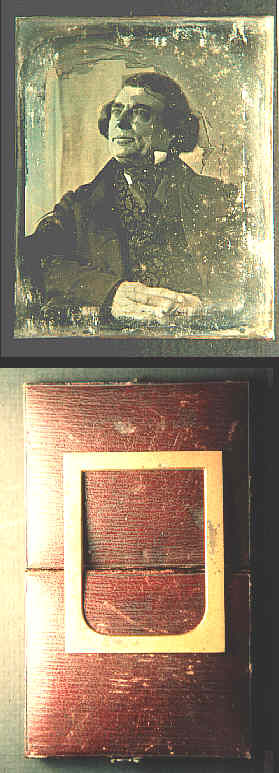
Ninth-plate
daguerreotype Plate "L"
(Writer's collection.)
|
WRITTEN ON BACK: Nothing.
POSSIBLE LENS: Plate L may represent an example of the finished portrait technique
John
William Draper developed for his spring 1840 gallery operated jointly with Professor Morse. It
could
represent one of two lens systems.
Draper described his first gallery lens system as two bi-convex
nonachromatic lenses set together, each lens being of sixteen inches focal length (eight inches when
set
together) and four inches aperture. This system was apparently developed from his earlier fall
1839
experiments with one four inch aperture biconvex lens of fourteen inches focal length. Perfected by
early spring 1840, this lens system allowed Draper to take as advanced a portrait as anyone in the
world. Draper possibly produced the image on plate L using the same lens system as he used for
plate
K, but used improved techniques of posing, etc.
Alternately, Draper stated that gallery operations
with
Professor Morse were first conducted using his four-inch nonachromatic system but later utilized
French achromatic lenses. Superior contrast and depth of field in the image on plate L when
compared
to the image on plate K suggest the possibility that Draper used a French achromatic lens to
produce
plate L.
The possibility that Draper used a French achromatic is lessened however, by information
in
Draper's letter to Sir John Herschel. Draper clearly described taking the daguerreotype of his
sister
with a nonachromatic lens system. Since the Dorothy Catherine Draper daguerreotype shows no
inferiority to plate L, both may be products of Draper's nonachromatic lens system.
|